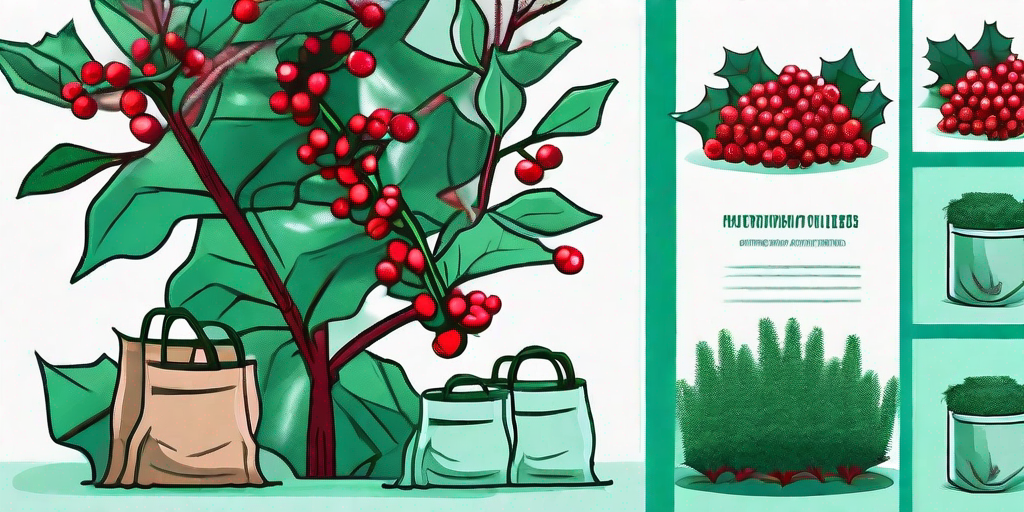
If you've ever been envious of your neighbor's lush holly bushes, then you're in the right place. The secret to their success might not be a green thumb, but rather the right fertilizer. In this guide, we'll delve into the world of holly bush care, focusing on the importance of fertilizer in achieving that lush, green foliage that makes holly bushes the envy of the neighborhood.
The Basics of Holly Bush Care
Before we dive into the nitty-gritty of fertilizers, it's important to understand the basics of holly bush care. After all, even the best fertilizer can't save a holly bush that's been planted in the wrong location or is being watered incorrectly.
Holly bushes prefer well-drained soil and a sunny to partially shaded location. They're fairly drought-tolerant once established, but they do appreciate a good drink of water during dry spells. And while they're not overly picky about soil pH, they do prefer slightly acidic conditions.
Planting Your Holly Bush
When it comes to planting your holly bush, timing and location are key. Spring is the ideal time to plant, as this gives the bush plenty of time to establish its root system before the heat of summer sets in. As for location, choose a spot that gets at least six hours of sunlight a day and has well-drained soil.
Once you've chosen the perfect spot, dig a hole that's twice as wide and just as deep as the root ball of your holly bush. Place the bush in the hole, making sure the top of the root ball is level with the ground. Backfill with soil, firming it gently around the base of the bush.
Watering and Mulching
After planting, give your holly bush a good soaking. Then, apply a layer of mulch around the base of the bush to help conserve moisture and keep weeds at bay. Aim for a layer about 2-3 inches thick, but be sure to keep the mulch a few inches away from the trunk of the bush to prevent rot.
Going forward, water your holly bush regularly, especially during dry spells. However, be careful not to overwater, as this can lead to root rot. A good rule of thumb is to water when the top inch of soil feels dry to the touch.
The Right Fertilizer for Holly Bushes
Now that we've covered the basics of holly bush care, let's talk about fertilizer. The right fertilizer can make a huge difference in the health and appearance of your holly bush, promoting lush, green foliage and vibrant berries.
But what is the right fertilizer for holly bushes? The answer is a fertilizer that's high in nitrogen and contains iron. Nitrogen promotes leaf growth, while iron helps prevent yellowing, a common issue in holly bushes.
When to Fertilize
The best time to fertilize your holly bush is in early spring, just before new growth begins. This gives the bush a nutrient boost just when it needs it most. You can also apply a second round of fertilizer in late summer or early fall if desired.
When fertilizing, be sure to follow the package instructions for the correct application rate. Too much fertilizer can be just as harmful as too little!
How to Apply Fertilizer
Applying fertilizer to your holly bush is a simple process. Start by sprinkling the fertilizer evenly around the base of the bush, staying at least a foot away from the trunk. Then, water thoroughly to help the fertilizer soak into the soil.
Remember, the goal is to feed the roots, not the leaves, so there's no need to get fertilizer on the foliage of the bush. In fact, doing so can cause leaf burn, so it's best to avoid it.
Common Holly Bush Problems and Solutions
Even with the best care and the right fertilizer, holly bushes can sometimes run into problems. Here are some common issues and their solutions:
Yellowing Leaves
If your holly bush's leaves are turning yellow, it could be a sign of iron deficiency. This can be corrected by applying a fertilizer that contains iron, or by adding an iron supplement to the soil.
Yellowing leaves can also be a sign of overwatering, so be sure to check the soil moisture levels before reaching for the fertilizer.
Leaf Drop
Leaf drop is a common issue in holly bushes, especially during periods of stress such as drought or extreme heat. The best solution is to water the bush deeply and regularly, and to apply a layer of mulch to help conserve moisture.
If leaf drop continues despite your best efforts, it may be a sign of a more serious issue such as root rot or a pest infestation. In this case, it's best to consult a local extension service or a professional arborist.
FAQs About Growing Holly Bushes
Can I grow a holly bush from a cutting?
Yes, holly bushes can be propagated from cuttings. Take a 4-6 inch cutting from the tip of a healthy branch, remove the lower leaves, and dip the cut end in rooting hormone. Then, plant the cutting in a pot filled with a mix of peat moss and perlite, and keep it moist until roots develop.
Why are my holly bush's berries falling off?
Holly berries can fall off for a number of reasons, including drought, a lack of pollination, or a pest infestation. To prevent berry drop, water your holly bush regularly, ensure it has a suitable pollinator nearby, and keep an eye out for pests.
Do holly bushes need a male and female to produce berries?
Yes, most holly bushes are dioecious, meaning there are separate male and female plants. Only the female plants produce berries, and only if a male plant is nearby to provide pollination.
Conclusion
With the right care and the right fertilizer, you too can grow gorgeous holly bushes with lush foliage. So why not give it a try? Your neighbors will be green with envy!















